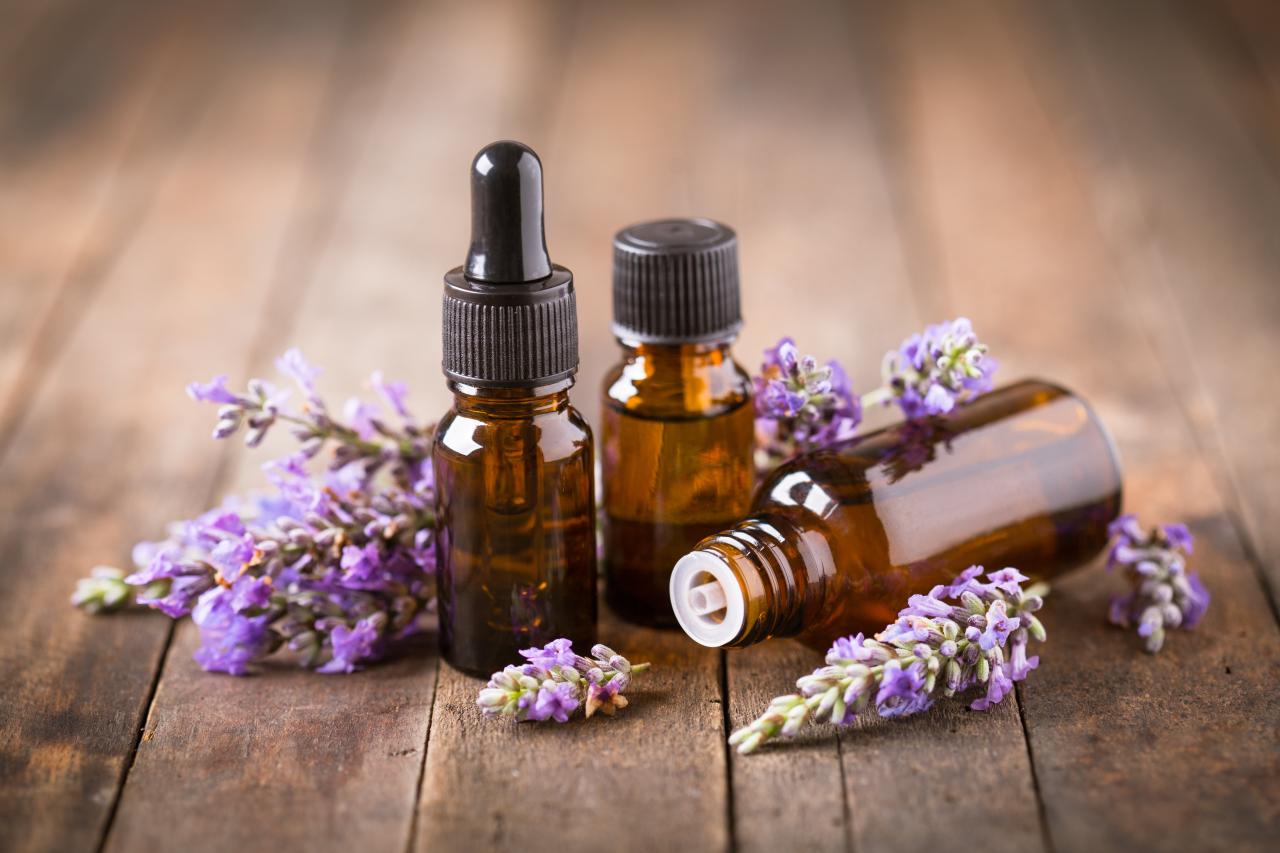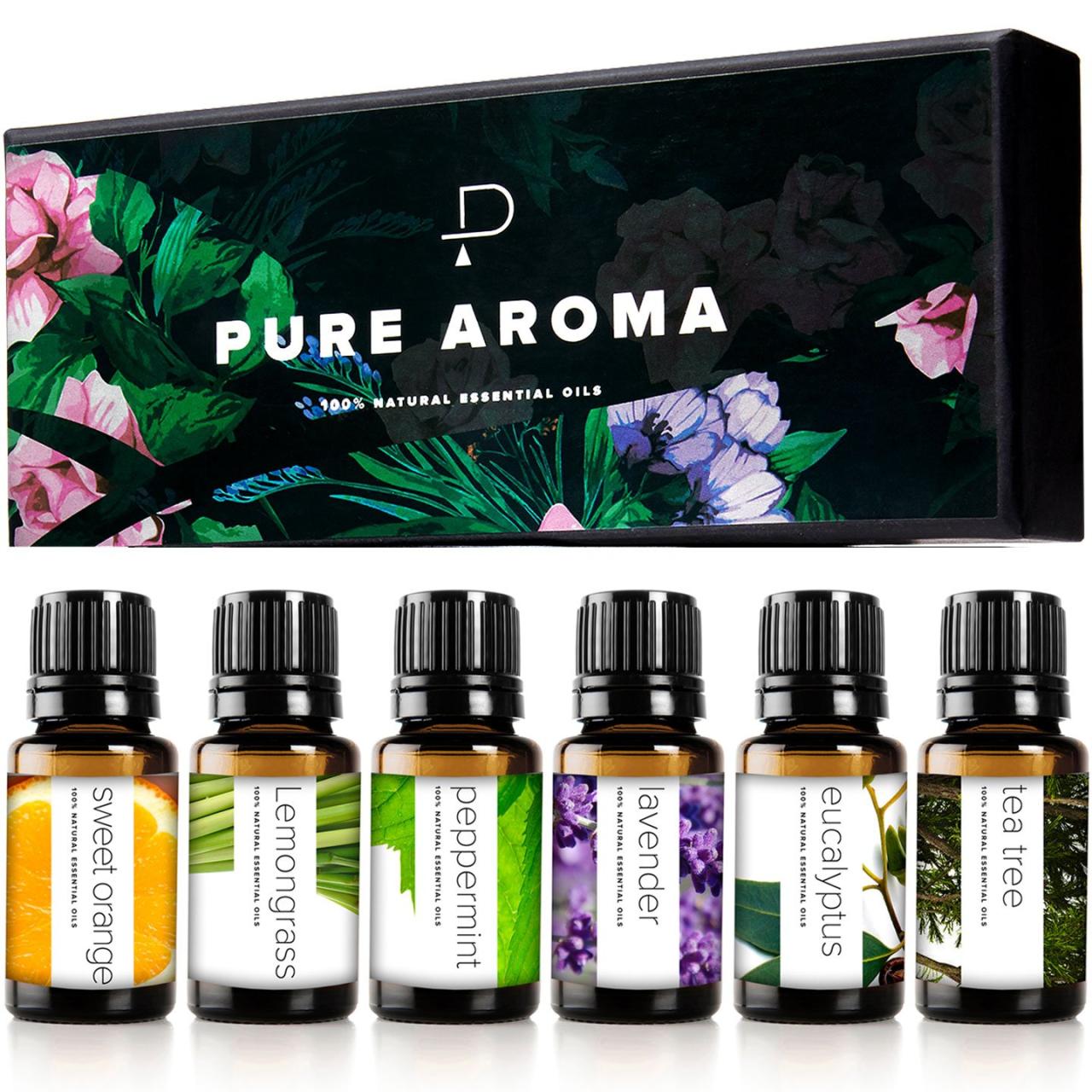Welcome to the enchanting world of essential oil aromatherapy, where nature’s fragrant essences unlock a treasure trove of therapeutic benefits. As we delve into this captivating realm, prepare to discover the extraordinary power of these aromatic compounds, unlocking the secrets to stress relief, enhanced mood, and a profound sense of well-being.
Essential oils, extracted from the very essence of plants, carry within them a symphony of therapeutic properties. From the calming embrace of lavender to the invigorating zest of citrus, each oil possesses a unique character and healing potential. As we explore the art of blending and application, you’ll gain invaluable insights into harnessing the transformative power of these aromatic gems.
Essential Oil Properties
Essential oils are concentrated plant extracts that contain the volatile compounds responsible for the plant’s distinctive scent and therapeutic properties.
Chemically, essential oils are composed primarily of terpenes, which are hydrocarbons produced by plants as secondary metabolites. These terpenes can be classified into two main groups: monoterpenes (C10H16) and sesquiterpenes (C15H24).
Therapeutic Properties
Essential oils possess a wide range of therapeutic properties, including:
- Antibacterial and antiviral
- Antifungal
- Anti-inflammatory
- Analgesic
- Sedative
- Stimulant
These properties make essential oils useful for a variety of applications, including:
- Treating infections
- Reducing inflammation
- Relieving pain
- Promoting relaxation
- Improving mood
Popular Essential Oils
The following table summarizes the properties and uses of some popular essential oils:
| Oil | Properties | Uses |
|---|---|---|
| Lavender | Antiseptic, anti-inflammatory, sedative | Treating anxiety, insomnia, headaches |
| Tea Tree | Antibacterial, antifungal, antiviral | Treating acne, athlete’s foot, nail fungus |
| Eucalyptus | Antiseptic, expectorant, decongestant | Treating colds, flu, respiratory infections |
| Peppermint | Analgesic, stimulant, anti-nausea | Relieving headaches, improving digestion, reducing stress |
| Lemon | Antibacterial, antiviral, detoxifying | Treating acne, boosting immunity, improving mood |
Aromatherapy Techniques
Aromatherapy, the practice of using essential oils for therapeutic purposes, offers a range of techniques for harnessing the benefits of these volatile compounds. Each method has its unique advantages and limitations, and understanding these techniques is crucial for selecting the most appropriate approach for specific needs.
The primary methods of aromatherapy include inhalation, topical application, and diffusion.
Inhalation
Inhalation is the direct method of aromatherapy, where essential oils are inhaled through the nose or mouth. This technique allows for rapid absorption of the oils into the bloodstream, resulting in immediate effects on the body and mind.
- Benefits:Quick and effective, ideal for addressing immediate needs like stress relief, mood enhancement, or respiratory support.
- Limitations:May be too intense for some individuals, especially those with respiratory conditions.
Topical Application
Topical application involves diluting essential oils in a carrier oil or cream and applying them directly to the skin. This method allows for localized effects, targeting specific areas of the body.
- Benefits:Suitable for treating skin conditions, muscle aches, and localized pain. Provides sustained effects over time.
- Limitations:Absorption rate may vary depending on the skin’s condition. May cause skin irritation in some individuals.
Diffusion
Diffusion disperses essential oils into the air using a diffuser device. This method creates a gentle and continuous aromatic environment, providing long-lasting effects.
- Benefits:Creates a relaxing or stimulating atmosphere. Suitable for large spaces or for continuous use throughout the day.
- Limitations:May not be as effective as inhalation or topical application for immediate effects. Requires a diffuser device.
Choosing the Right Technique
The choice of aromatherapy technique depends on the desired effects and individual preferences. For immediate relief or addressing specific body areas, inhalation or topical application may be more suitable. For creating a long-lasting, ambient atmosphere, diffusion is a better option.
Blending Essential Oils

Creating custom essential oil blends allows you to tailor aromatherapy to your specific needs. Blending involves combining different essential oils to achieve a desired therapeutic effect.
When blending essential oils, consider the following principles:
Compatibility and Synergy
Essential oils have varying chemical compositions, and some may not blend well together. Compatibility refers to the ability of oils to mix without separating or reacting negatively. Synergy occurs when combined oils produce an effect greater than the sum of their individual effects.
Popular Essential Oil Blends
- Relaxation Blend:Lavender, chamomile, and bergamot promote relaxation and reduce stress.
- Energy Blend:Peppermint, rosemary, and eucalyptus invigorate and boost alertness.
- Sleep Blend:Valerian root, lavender, and clary sage promote restful sleep.
Safety and Precautions

While essential oils offer numerous benefits, it’s crucial to be aware of potential risks and take necessary precautions to ensure safe use. Understanding the contraindications and proper handling practices is essential for a positive and risk-free aromatherapy experience.
Potential Risks and Contraindications:
- Skin irritation:Some essential oils, such as cinnamon and oregano, can cause skin irritation or allergic reactions. It’s recommended to dilute them with a carrier oil before applying them topically.
- Ingestion:Essential oils are highly concentrated and should never be ingested undiluted. Ingestion can lead to serious health issues, including liver damage and respiratory problems.
- Pregnancy and breastfeeding:Certain essential oils, such as clary sage and rosemary, may interfere with pregnancy or breastfeeding. It’s best to avoid using them during these periods.
- Medical conditions:People with certain medical conditions, such as epilepsy or asthma, should consult a healthcare professional before using essential oils.
Safe Storage and Handling
To ensure the safety and longevity of essential oils, it’s important to store and handle them properly:
- Store in a cool, dark place:Essential oils are sensitive to light and heat, so store them in a cool, dark place away from direct sunlight.
- Use amber or cobalt glass bottles:These bottles protect the oils from harmful UV rays.
- Keep containers tightly sealed:Essential oils can evaporate quickly, so keep containers tightly sealed when not in use.
- Dispose of old oils:Essential oils can lose their potency over time, so dispose of any oils that are more than 2 years old.
Guidelines for Using Essential Oils with Children, Pets, and Pregnant Women
When using essential oils around children, pets, or pregnant women, extra precautions should be taken:
- Children:Dilute essential oils heavily with a carrier oil before using them on children. Avoid using oils that are known to be irritating or stimulating, such as peppermint or eucalyptus.
- Pets:Some essential oils, such as tea tree oil and citrus oils, can be toxic to pets. Always consult a veterinarian before using essential oils around pets.
- Pregnant women:Avoid using essential oils that are known to stimulate uterine contractions or interfere with pregnancy, such as clary sage and rosemary.
Applications of Essential Oil Aromatherapy

Essential oil aromatherapy has gained significant recognition for its therapeutic applications in various domains of health and well-being. Aromatherapy involves the use of concentrated plant oils extracted through distillation or cold pressing, and their therapeutic effects are primarily attributed to their volatile organic compounds (VOCs).
Research and case studies have demonstrated the efficacy of essential oil aromatherapy in addressing a range of conditions, including stress relief, mood enhancement, and pain management.
Stress Relief
Essential oils like lavender, chamomile, and bergamot possess calming and sedative properties that promote relaxation and reduce stress levels. Studies have shown that inhaling lavender oil can lower cortisol levels, a hormone associated with stress, and improve sleep quality.
Mood Enhancement
Certain essential oils, such as citrus oils (e.g., orange, lemon), peppermint, and rosemary, have mood-boosting effects. These oils stimulate the release of neurotransmitters like serotonin and dopamine, which are associated with feelings of happiness and well-being.
Pain Management
Essential oils like peppermint, eucalyptus, and clove have analgesic and anti-inflammatory properties that can alleviate pain and discomfort. Studies have found that applying peppermint oil topically can reduce muscle pain and tension, while inhaling eucalyptus oil can provide relief from headaches and respiratory issues.
In complementary and alternative medicine, essential oil aromatherapy is often used as an adjunct therapy alongside conventional treatments. Aromatherapy can enhance the effectiveness of medications, reduce side effects, and improve overall well-being.
Ending Remarks
As we conclude our aromatic journey, may the knowledge you’ve gained empower you to embrace the transformative power of essential oil aromatherapy. Remember, these fragrant elixirs offer a gentle yet potent path to well-being, inviting you to connect with nature’s healing touch.
Whether seeking tranquility, vitality, or simply a moment of aromatic bliss, may the wisdom of essential oils forever guide your path.